Navistar's History of Innovation
Navistar’s history of innovation reaches back to the early 1800s with the invention of the first mechanical harvesting machine. For nearly two centuries – in the fields, over roads, through peace and war, and all the way to the moon – Navistar has consistently helped drive North America’s growth.
-
Today
-
2000
-
1900
-
1800
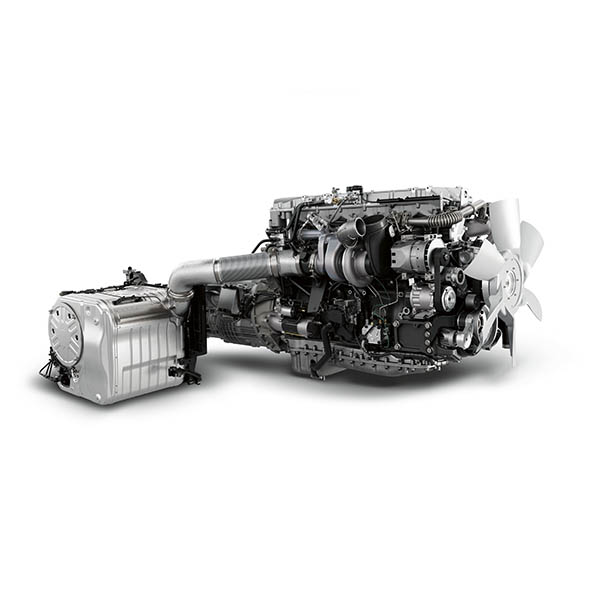
Integrated Powertrain
Navistar continues its commitment to accelerate the impact of sustainable mobility with the introduction of the International® S13 Integrated Powertrain.
Developed over five years through global collaboration with the TRATON GROUP, the S13 Integrated Powertrain will provide superior operating economy, stellar performance, and simplicity and serviceability to the North American commercial vehicle market.
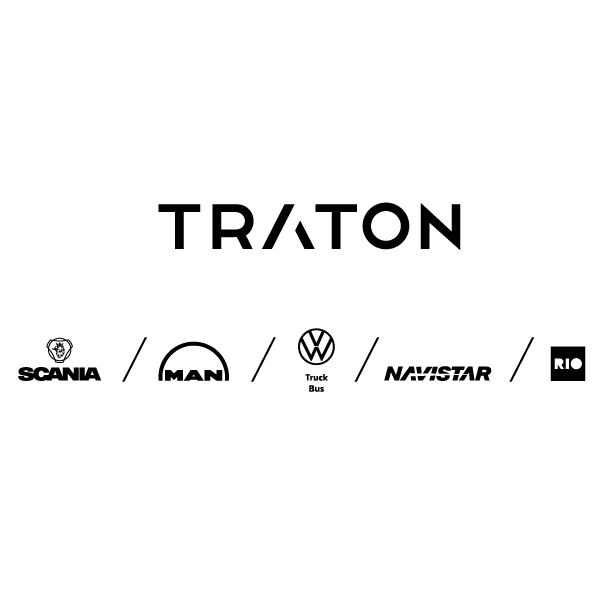
Navistar is Acquired by
TRATON SE
In July 2021, Navistar International Corporation merged with TRATON SE, through a subsidiary. TRATON (formerly Volkswagen Truck and Bus) is a subsidiary of Volkswagen AG and one of the world’s largest commercial vehicle manufacturers. As a result of the merger, Navistar joined TRATON’s existing brands of Scania, MAN, Volkswagen Truck & Bus and RIO. The merger builds upon a successful cooperative strategic alliance that began in 2017.

New Innovations Formulate the Connected Commercial Truck
In 2013, Navistar launches OnCommand® Connection (OCC), which increases uptime in all makes of trucks by constantly sensing and communicating performance data to the vehicle owner. Through predictive and preventative maintenance, customers using OCC see fewer vehicle failures requiring a tow and a reduction in annual repair costs.
Image - OnCommand® Connection, a comprehensive portfolio of connected vehicle services.
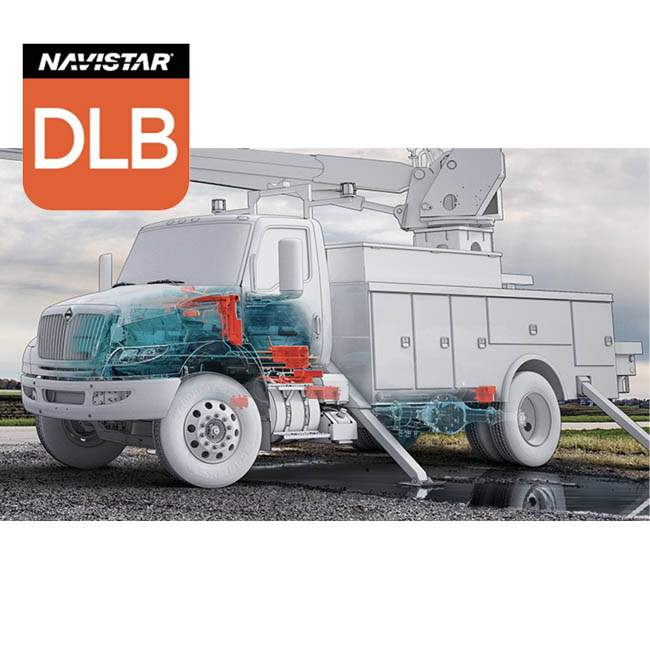
Diamond Logic Builder Creates the Connected Commercial Truck
After initially patenting multiplex wiring in the 1980s, programmable logic controls are introduced in 2003. The Diamond Logic® Builder allows customers to optimize utility vehicle performance – enhancing safety, reducing costs, and improving electrical system reliability.
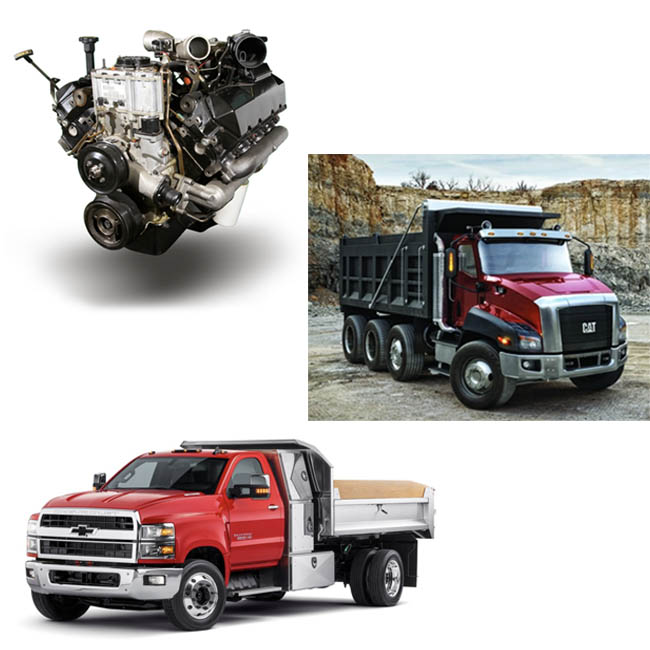
Collaboration Without Boundaries Drives Innovation
Beginning in the 1980s, Navistar builds engines and trucks for Ford under a series of joint ventures and supply agreements. Most notable is for the 2.5 million PowerStroke diesel engines built between 1994 and 2003. In 2009, Navistar and Caterpillar enter a strategic alliance for the North America global truck severe service trucks market. In 2015, Navistar and General Motors team up to co-develop Class 4/5 conventional cab commercial trucks.
Images - Top left: The Ford PowerStroke diesel engine; top right: CAT CRT660 built by Navistar; bottom: GM's medium-duty Silverado built by Navistar.
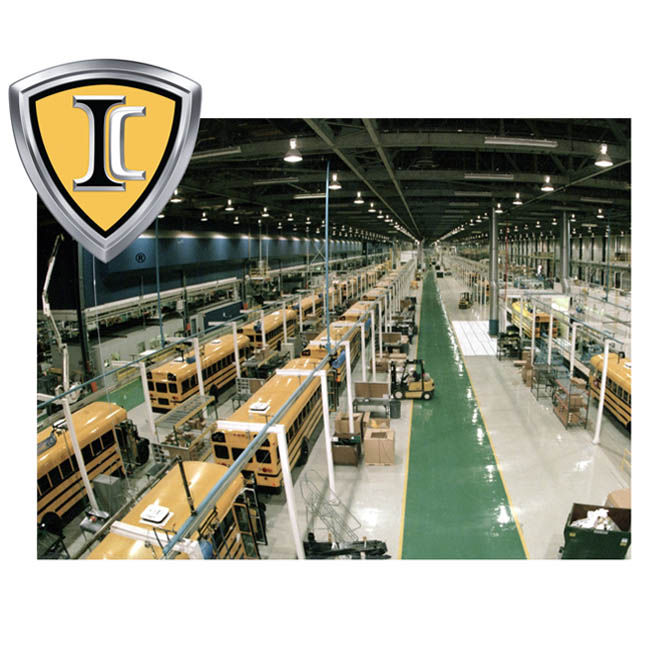
Navistar Becomes First Fully Integrated School Bus Manufacturer
After building bus chassis since 1919, in 1995 Navistar acquires American Transportation Corporation (AmTran), a manufacturer of school bus bodies. As a result, Navistar becomes the first modern-day manufacturer of fully integrated school buses. In 2009, the bus business renames itself IC Bus®. “IC” stands for Integrated Coach, referring to the vehicles’ almost complete assembly under a single corporate structure.
Image - The IC Bus factory in Tulsa, Oklahoma.
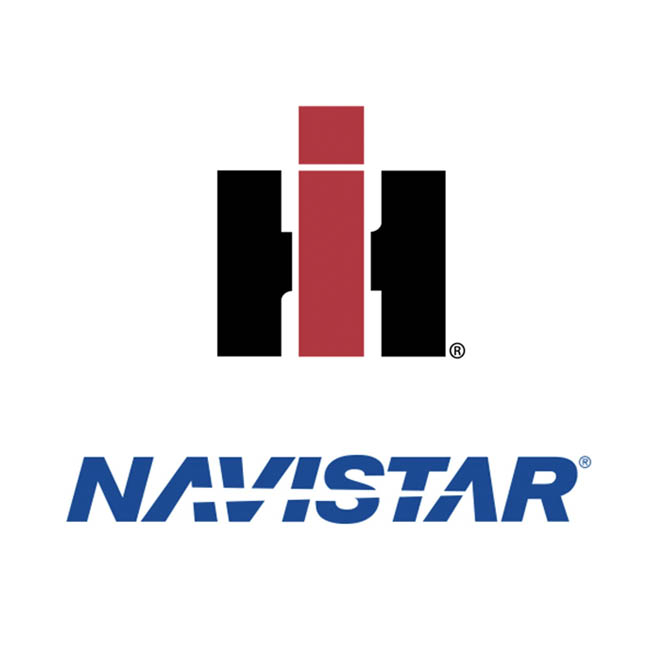
International Harvester Becomes Navistar International Corporation
In the 1980s, following challenging economic times, International Harvester begins selling off certain divisions. In 1984, IH finalizes a deal to sell the Agricultural Division, along with the name and logo, to Case Corporation. In 1986, the company reintroduces itself as Navistar International Corporation. To this day, the "International" brand name is still used on Navistar product lines and is recognized as a leader in the commercial vehicle industry.
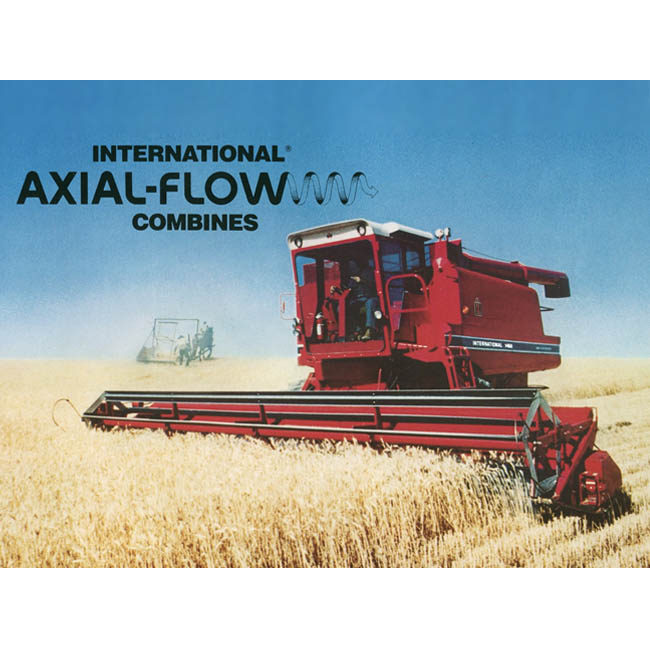
The Innovative Axial-Flow Combine is Launched
Did you know? International Harvester’s Axial-Flow Combine, the breakthrough product of 1977, featured innovative rotary-type technology used by all combine makers today.
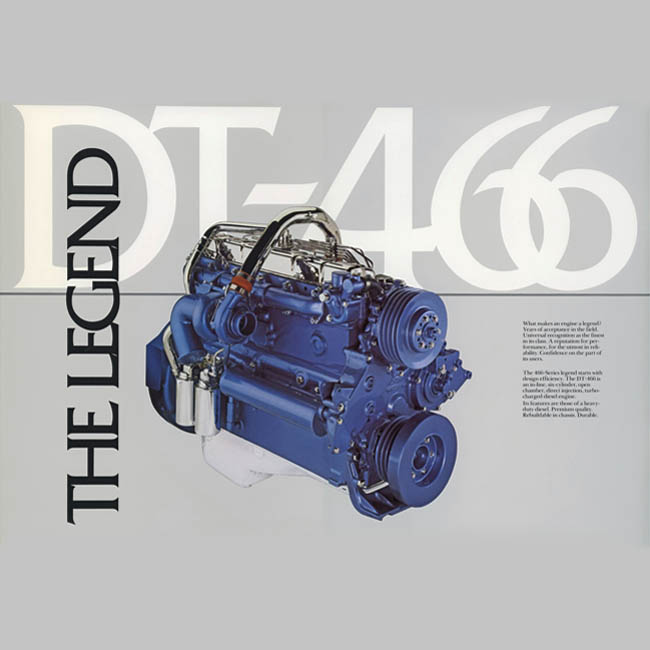
The Iconic DT-466 Engine, Known as "The Legend"
The DT-466 engine, an iconic company product, is developed by the construction equipment division for heavy equipment. In 1973, it is the engine in the company’s first 4-wheel drive turbo farm tractor, and in 1975, the DT-466 is offered in some International® trucks. It becomes an extremely popular engine for medium duty trucks and buses for decades. Customers were known to go into a dealership and simply say, “Show me the DT truck.”
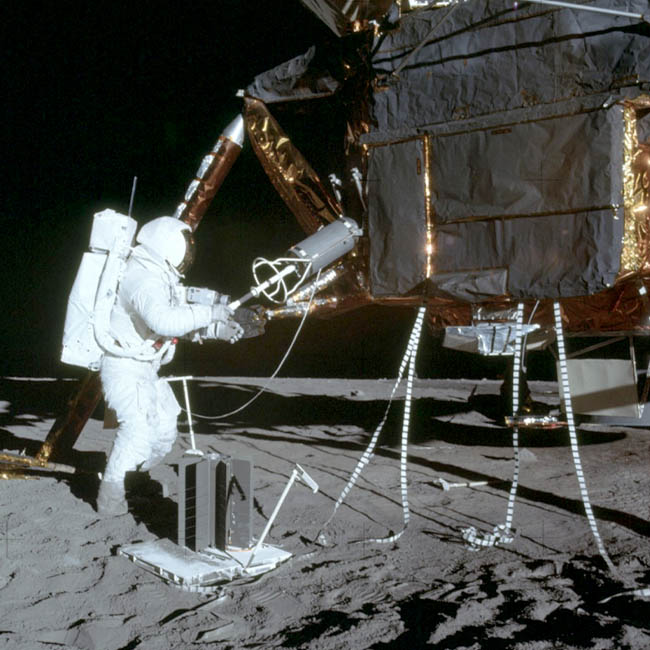
To the Moon and Beyond
Did you know? In the 1960s, International Harvester plays a role in NASA's Apollo and Saturn V rocket programs, helping man reach the moon. This relationship continues into the 1970s when IH chemists develop an insulation NASA used on the International Space Station and the Mars Rover.
Image - Apollo 12 Astronaut Alan Bean unloads the RGT fuel element container, which was constructed by International Harvester's Solar Division.
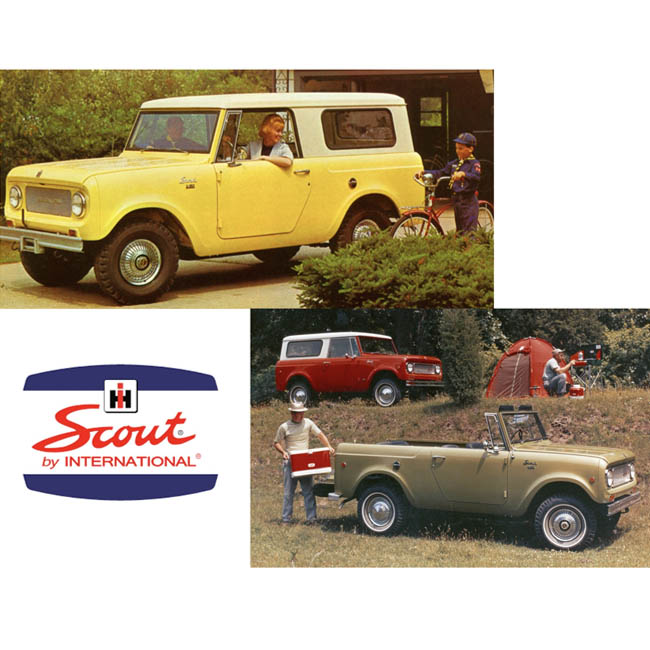
The Scout, a Precursor to the SUV
After building trucks and pickups for over 50 years, International Harvester develops the Scout in 1961. Marketed as an all-terrain family recreational vehicle, the Scout evolves into a true SUV and is one of the company's most innovative and popular vehicles of all time. It was in production until 1980. Today, the Scout is a highly collectible vehicle prized by enthusiasts.
Image - The ever-popular Scout all-terrain family vehicle.
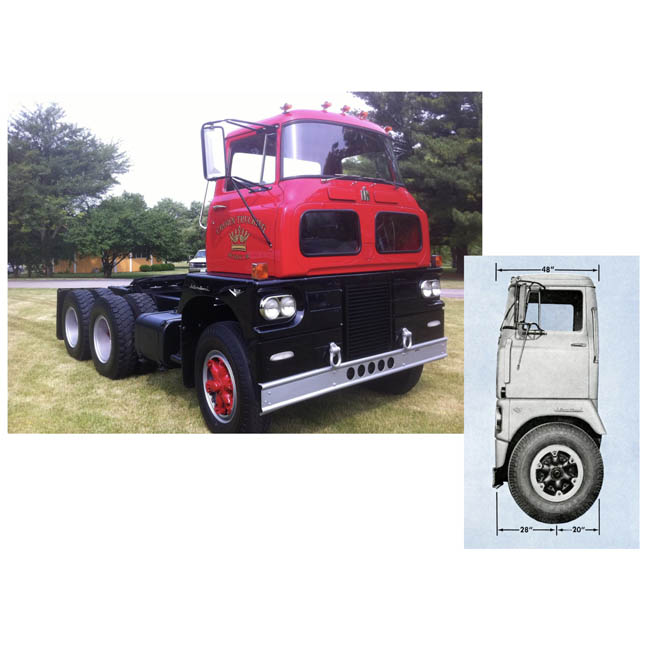
IH Cab-Over-Engine Trucks Dominate U.S. On-Highway Market
To meet truck length laws, International Harvester designs compact “cab-over-engine” trucks. A shorter cab allows for a longer trailer and more cargo. To the independent driver or the fleet, moving more cargo means more money per load. Some cabs are as short as 48" front to back.
Images - Left: the ACOF-192 cab from 1964; right, the compact cab-over-engine design.
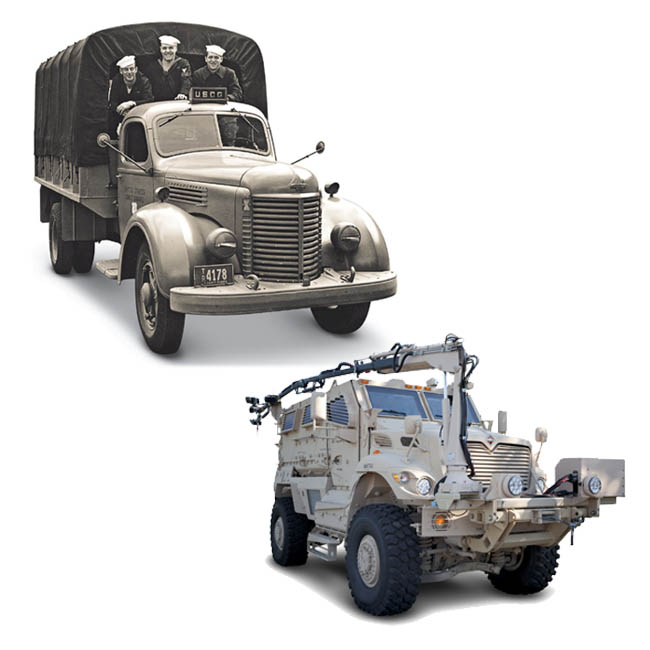
Supporting America’s Defense Needs through Innovation
Between 1941 and 1945, International Harvester builds rugged vehicles and a vast array of equipment to support America during WWII.
More than 50 years later, Navistar forms Navistar Defense and builds mine-resistant ambush protective (MRAP) vehicles for the U.S. Army.
Images - Left: International Harvester's Model K-6 truck built for the Coast Guard; right, Navistar's MRAP built for the U.S. Army in the 2000s.
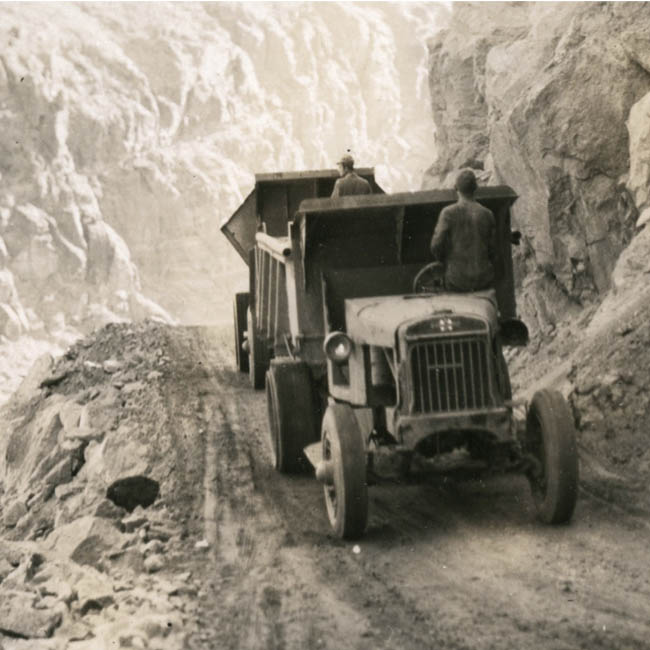
Supporting America’s Growth During The Great Depression
In 1931, International Harvester wins a contract to supply the trucks to build the Hoover Dam – the largest public works project in U.S. History at the time. In the end 80% of all trucks used to build the dam were Internationals. Running 24/7 in 100o heat, the trucks established a reputation as the most durable and reliable in the country.
Image - An International Harvester truck hard at work in the Hoover Dam c. 1932.
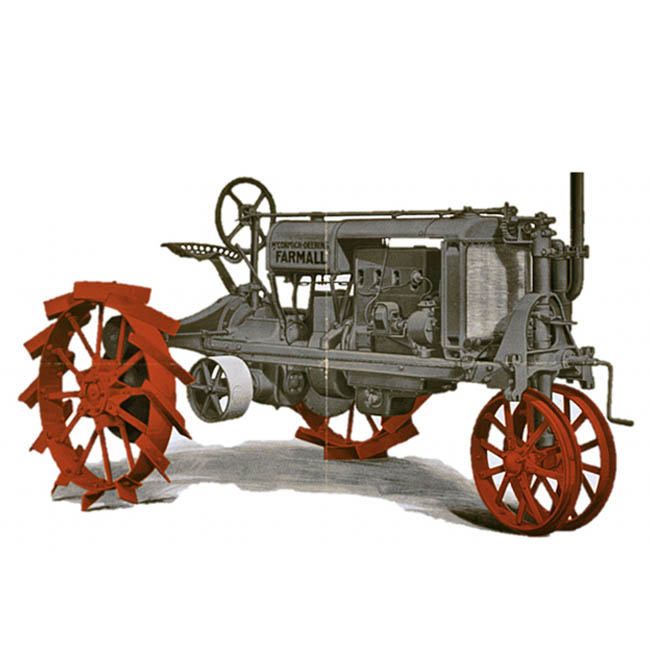
The Farmall Tractor Revolutionizes Farming
Launched in 1924, the Farmall Tractor is recognized as the world's first row crop tractor and by many as the most important tractor in history. It is small, lightweight, with high ground clearance and a small turning radius, and most importantly, unlike any tractor before – it can cultivate.
The Farmall tractor was copied by all other tractor makers and set the stage for Harvester’s tractor dominance for the next 50 years.
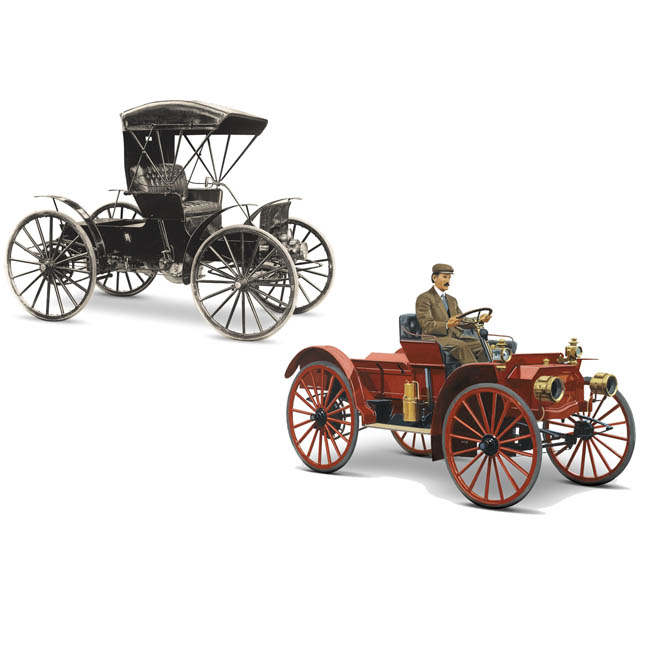
International Harvester Creates First Pickup Truck
Did you know? The Auto Wagon, the forerunner of the pickup truck, was developed after the company noticed farmers were removing seats and loading heavy equipment onto the back of the Auto Buggy.
Images - An illustrated version of the original International Harvester logo. Left, the Auto Buggy from 1907; right, the Auto Wagon from 1909.
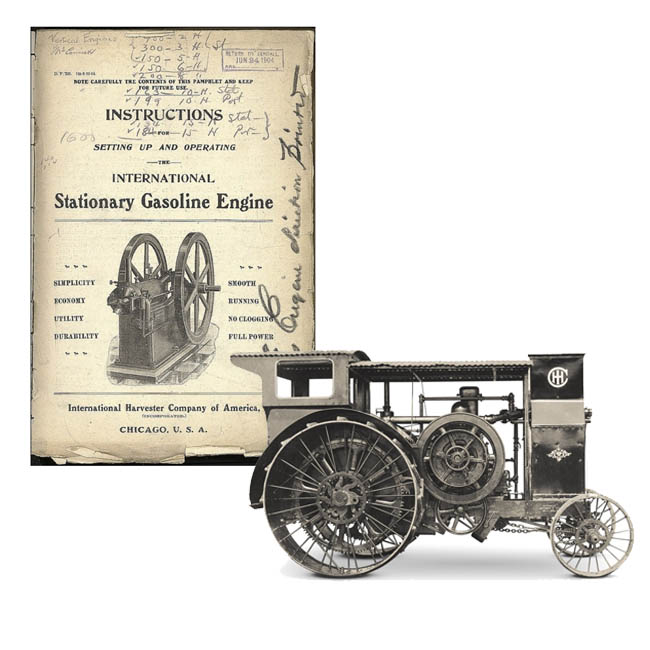
International Harvester Creates its First Gasoline Engine and Tractor
In 1904, International Harvester builds its first commercial gasoline engine, puts it on a wheeled platform and creates the company's first tractor in 1906.
Images - Left: International Harvester's gasoline engine instructions from 1904; right, the Mogul tractor from 1906.
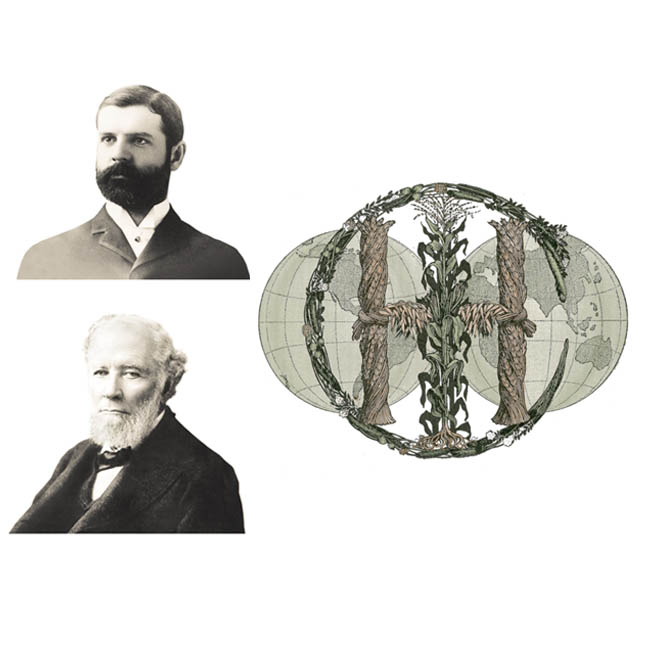
McCormick Merger Forms International Harvester
In 1902, McCormick Harvesting Machine Company merges with its fiercest competitor, Deering Harvester Company, and three smaller agricultural equipment firms to become International Harvester (IH). Through the merger, Cyrus McCormick, Jr. creates a company with an 85% market share in the farm equipment business. By 1910, International Harvester is the 4th largest company in the U.S.
Images - Above left: Cyrus McCormick, Jr.; below left: William Deering; right: the original International Harvester logo.
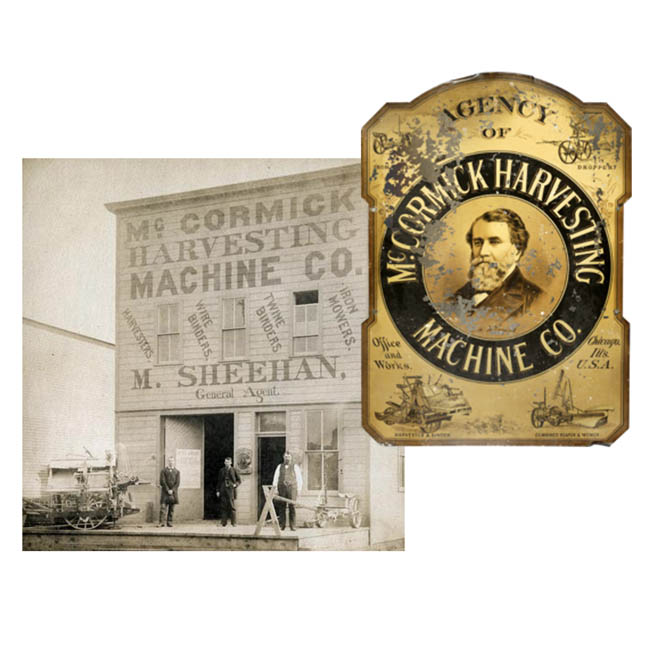
Cyrus McCormick Organizes Franchise Dealership Network
To be closer to his customers, McCormick moves his business from Virginia to Chicago in 1847. In the early 1880s, he organizes his loose collection of salesmen into a far-reaching franchise dealership network. McCormick is the first to offer his customers product warranties and a payment plan, deferring final payments for equipment until after crops were harvested and sold.
Images - Above left: Cyrus McCormick, Jr.; below left: William Deering; right: an illustrated version of the original International Harvester logo.

Mechanical Reaper Takes its Place in History
Did you know? A McCormick Mechanical Reaper is included in the historical fresco painted on the dome of the United States Capitol Building.
Image: U.S. Capitol Building dome featuring the McCormick Reaper.
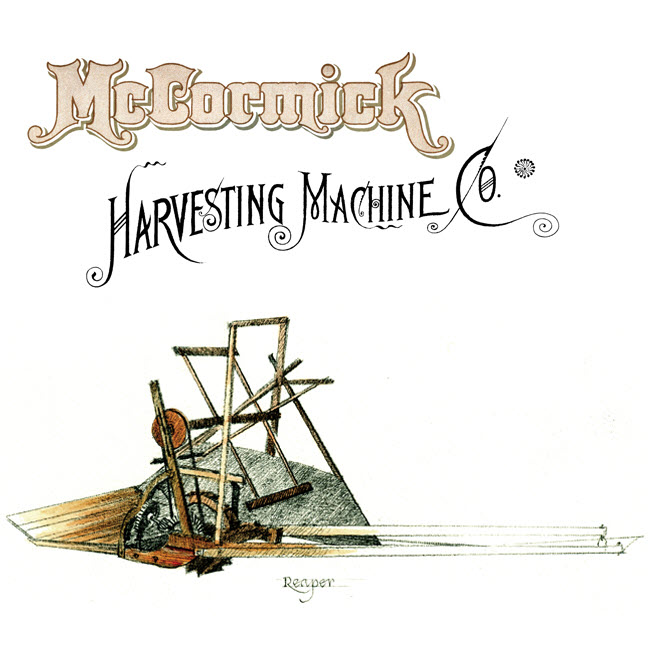
Cyrus McCormick Invents First Successful Mechanical Reaper
One of the earliest pieces of mechanized farming – a device to cut grain – the Reaper will earn its reputation as the bread machine of half the human race. By the time of McCormick's death in 1884, the reaper is used in all 82 wheat-producing countries.